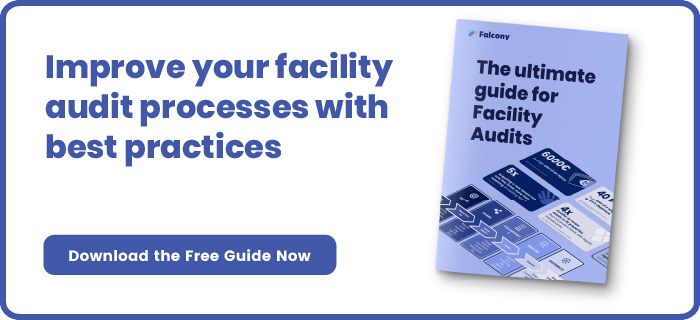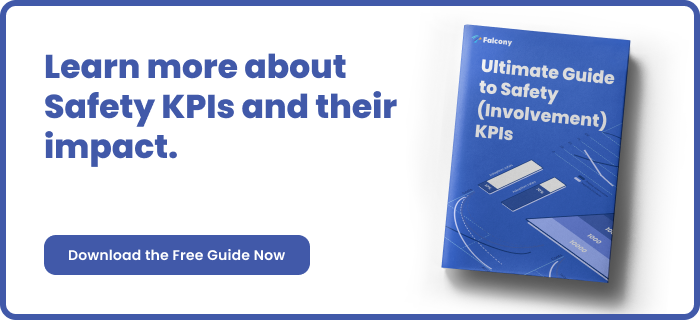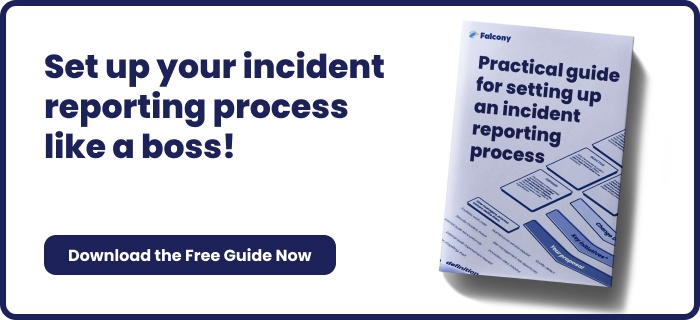10 Common Safety Near Misses in Facilities Management
Facilities management is integral to ensuring the smooth operation of buildings and structures, encompassing maintenance, safety, and efficiency to create a well-functioning environment.
However, like any industry, it carries certain risks that, if not addressed, can result in accidents or unsafe conditions. While near misses are often seen as fortunate close calls, they serve as an important indicator that safety measures may not be sufficient or properly followed. Identifying common safety near misses in facilities management allows for proactive measures to mitigate these risks before they lead to incidents.
Here are ten common safety near misses that facilities management teams should be aware of:
Slips, Trips, and Falls
Slips, trips, and falls are among the most common safety hazards encountered in facilities management. These can occur due to wet floors, cluttered walkways, uneven flooring, or poor visibility in low-light areas. A facility’s daily operations, such as cleaning, maintenance, and deliveries, increase the likelihood of these hazards. While a worker may manage to avoid a fall, the incident serves as a reminder of the potential danger lurking in everyday activities.
Prevention Tip: Regularly inspect walkways and floors, addressing any hazards such as spills, loose tiles, or debris immediately. Wet floors should be clearly marked with warning signs, and staff should be trained to avoid blocking pathways with equipment or materials. Additionally, ensure that appropriate footwear is worn to reduce the risk of slips.
Electrical Hazards
Electrical hazards are often invisible but can have serious consequences if not managed correctly. Issues such as faulty wiring, exposed electrical components, overloaded circuits, or improper grounding are prevalent in facilities that rely on complex electrical systems. While a team may avoid injury by taking immediate action or noticing a fault before it escalates, the risk of electrical fires, electrocution, or equipment damage is ever-present.
Prevention Tip: Ensure that all electrical systems undergo routine inspections by certified professionals to identify any signs of wear or malfunction. Employees should be trained to spot potential hazards and understand the importance of adhering to strict lockout/tagout procedures when working on electrical equipment. Avoid overloading circuits, and ensure that outlets and wires are in good condition.
Improper Use of Personal Protective Equipment (PPE)
Personal protective equipment (PPE) is essential for safeguarding workers in potentially hazardous environments. However, a near miss may occur when employees fail to use the correct PPE or wear it improperly, such as not using gloves when handling hazardous materials or neglecting ear protection when working around noisy equipment. These small lapses in safety protocols can lead to serious injury or long-term health issues.
Prevention Tip: Provide regular training sessions on the proper use and importance of PPE. Ensure that appropriate protective gear is readily available for each task and is suited to the specific risks. Conduct regular inspections of PPE to ensure it remains in good working condition, and remind staff of the dangers of complacency when it comes to personal safety.
Inadequate Lifting Techniques
Facilities management often involves tasks that require lifting or moving heavy equipment, machinery, or materials. A near miss can occur when an employee uses improper lifting techniques, such as lifting an object without bending the knees or trying to move something too heavy on their own. While they may avoid injury in the short term, the risk of long-term musculoskeletal problems or accidents remains high.
Prevention Tip: Offer employees regular training on proper lifting techniques, focusing on body mechanics that reduce strain. Encourage the use of lifting equipment such as trolleys, forklifts, and hoists when necessary, and always ensure that heavy loads are lifted by a team rather than an individual. Reinforce the importance of knowing their limits and requesting assistance when needed.
Tool and Equipment Malfunctions
Tools and equipment are central to the daily functions of facilities management, but they can become dangerous when they are not maintained properly. A malfunction, such as a tool breaking during use or equipment failing unexpectedly, can lead to serious injury. While a worker may narrowly avoid an accident, this highlights the critical importance of keeping tools in good working order.
Prevention Tip: Establish a proactive maintenance schedule for all tools and equipment, including inspections and necessary repairs. Train employees to report any faults or malfunctions immediately, and ensure that all equipment is regularly tested for safety. Keep detailed records of maintenance and repairs, and take immediate action when safety concerns are raised.
Inadequate Fire Safety Measures
Fire safety is a top priority in facilities management, but even minor lapses can lead to disastrous consequences. A near miss could occur when fire alarms fail to activate during a fire drill, fire exits are blocked, or fire extinguishers are found to be out of order. While no fire may occur, the near miss demonstrates that fire safety protocols must be carefully followed to prevent catastrophic situations.
Prevention Tip: Conduct regular fire drills, and ensure that all staff are familiar with evacuation procedures. Schedule periodic inspections of fire safety systems, including alarms, extinguishers, and emergency lighting, to confirm they are functional. Fire exits and escape routes should always remain unobstructed, and employees should be trained on how to respond swiftly in the event of an emergency.
Improper Chemical Storage
Chemical handling and storage are critical components of many facilities management tasks, including cleaning, maintenance, and pest control. Improper chemical storage can lead to chemical reactions, spills, or exposure, all of which pose significant health and safety risks. Even if no immediate injury occurs, a near miss could be a sign of deeper organisational issues regarding chemical safety protocols.
Prevention Tip: Implement a clear system for the safe storage, labelling, and handling of chemicals, including the use of appropriate containers and signage. Ensure that staff are trained to understand the risks of different chemicals and follow the necessary precautions. Always have spill containment and clean-up procedures in place, as well as safety data sheets (SDS) for each chemical in use.
Blocked Access Routes
Access routes, such as aisles, hallways, stairwells, and emergency exits, are essential for the smooth operation of a facility. A blocked path can be a significant hazard, particularly in emergency situations when quick evacuation is required. A near miss may occur when employees or visitors are forced to navigate around obstructions, such as equipment, supplies, or improperly stored items.
Prevention Tip: Regularly inspect all access routes to ensure they are clear and unobstructed. Implement clear storage guidelines that prevent items from blocking pathways, and ensure that emergency exits are never locked or blocked. Conduct safety audits to identify potential hazards and address them promptly.
Inadequate Lighting
Poor lighting is another common hazard in facilities management. Areas with inadequate lighting, such as stairwells, basements, and storage rooms, can lead to accidents, especially when workers need to navigate through potentially hazardous environments. Even if a near miss occurs without injury, the possibility of a fall, trip, or mishap remains.
Prevention Tip: Ensure that all work areas are adequately lit, with particular attention to areas that are frequently used by employees. Install additional lighting in poorly lit spaces and regularly check that light fixtures are functioning correctly. In areas where natural light is insufficient, invest in energy-efficient lighting solutions that improve visibility and reduce risk.
Lack of Clear Signage and Warnings
Clear and visible signage is essential in alerting employees and visitors to potential hazards. Without proper warnings, hazards such as wet floors, restricted areas, and high-risk equipment can go unnoticed, leading to near misses or accidents. While staff may navigate these hazards successfully, the absence of signage can still contribute to a risky work environment.
Prevention Tip: Ensure that all potential hazards are clearly marked with appropriate signage, such as warning labels, hazard symbols, and directional arrows. Regularly review and update signage to reflect current safety protocols and ensure it remains legible and visible. Additionally, staff should be trained to recognise the significance of these signs and act accordingly.
Conclusion
Near misses are an important reminder that safety in facilities management requires ongoing vigilance and effort. By identifying common safety hazards and taking proactive measures to address them, facilities management teams can reduce the risk of incidents and create a safer working environment for all involved.
The key to effective safety management is not only reacting to incidents but actively preventing them through thorough training, clear safety procedures, and regular inspections. By investing in safety systems and fostering a culture of awareness, facilities managers can ensure that near misses are turned into valuable learning experiences, ultimately reducing the potential for more serious accidents in the future.
If you're looking to implement a mobile tool for your audits, we've got you covered. Falcony | Audit is easy-to-use, fast to set up, has customisable workflows, vast integration possibilities and more. Contact us for more information.
We are building the world's first operational involvement platform. Our mission is to make the process of finding, sharing, fixing and learning from issues and observations as easy as thinking about them and as rewarding as being remembered for them.
By doing this, we are making work more meaningful for all parties involved.
More information at falcony.io.

Related posts
6 Most Common Unsafe Acts in Hotels
In the hospitality industry, ensuring the safety of both guests and staff is paramount.
Hotels are...
12 Common Near Misses in Retail
In the dynamic and fast-paced retail environment, near misses—events that could have resulted in...
6 Common Near Misses in Facilities Maintenance and Cleaning
We can all appreciate the hard work of maintenance workers, janitors and cleaners to keep our homes...







